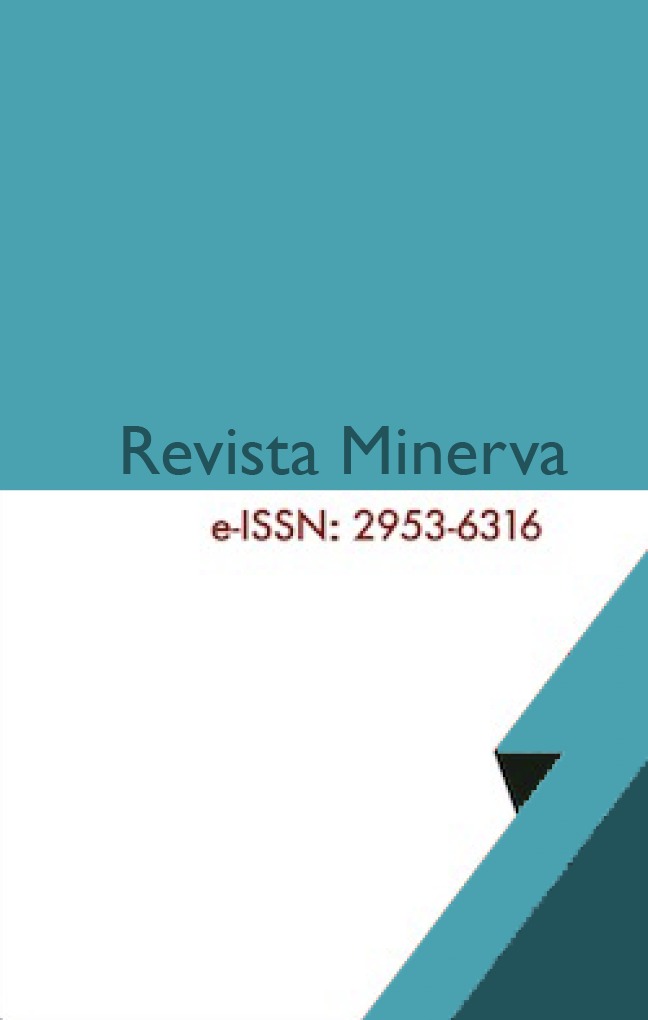PROPUESTA DE TAREAS DOCENTES PARA POTENCIAR LA EDUCACIÓN AMBIENTAL EN EL PROCESO DE ENSEÑANZA - APRENDIZAJE DE LA QUÍMICA EN LA EDUCACIÓN MEDIA SUPERIOR
DOI:
https://doi.org/10.53591/rmin.v4i7.2572Keywords:
Educación ambiental, Proceso de enseñanza aprendizaje de la Química, tareas docentes, carácter participativo y comunitarioAbstract
This article "Proposal for teaching tasks to promote environmental education in the teaching-learning process of chemistry in upper secondary education", outlines the results of the research carried out as part of the training process in undergraduate studies and responds to the need to achieve the integral formation of the young generations. It addresses the main shortcomings detected by the application of methods and instruments applied in the educational context in the municipality of Lajas in the province of Cienfuegos, Cuba. From the above, results are reflected such as 100% of the students denote in their modes of action poor mastery of the main environmental problems of the community and the school environment, little link between the contents they receive in the teaching of Chemistry and the activity daily and poor participation in activities dedicated to the protection of the environment. The elaboration and application of teaching activities was determined to promote environmental education with a participatory and community character from the Chemistry classes at the IPU Frank País García. The results of its application materialize in 95.4 of the students dominate the main environmental problems and suggest ways of solution as an active subject of society. 100% participate in school and extracurricular activities aimed at conservation and protection of the environment. 50% of them feel motivated by the link between the contents of the Chemistry subject and the environment, which is reflected in the participation in the Life Task competitions directed from the school.
References
Addine Fernández, F. (2004). Didáctica Teoría y práctica. Pueblo y Educación.
Addine Fernández, F. (2007). Didáctica Teoría y práctica. Pueblo y Educación.
Abreus González, P. (2010). Propuesta de tareas docentes para potenciar la educación ambiental en el área de Ciencias Naturales en el nivel preuniversitario. (Tesis de Maestría). Universidad de Cienfuegos “Carlos Rafael Rodríguez”.
Bauta Escobar. (2005). La Educación Ambiental en la provincia de Cienfuegos: un sitio Web para el noveno grado de la ESBU “Adolfo Ortiz Fonte”. (Trabajo de Diploma). Instituto Superior Pedagógico “Conrado Benítez García”.
Brown Roque, R.S. (2014). Tareas docentes para el tratamiento de la Educación Ambiental, desde la Química, en décimo grado. (Tesis de Maestría).Universidad “Ignacio Agramonte Loynaz”.
HEDESA, Y. (2013). Didáctica de la Química. Pueblo y Educación.
LEONTIEV, A. N. (1981). Actividad, Conciencia, y Personalidad. Pueblo y Educación.
Labrador Vento, A.M. (2016). Programa de la Educación Ambiental comunitaria dese la animación sociocultural para la carrera de Estudios Socioculturales de la Universidad de Pinar del Río. (Tesis de Maestría). Universidad de Pinar del Río “Hermanos Saíz Montes de Oca”.
Leithe, W. (1982). La Química y la protección del Medio Ambiente. España: Colmena.
Moreno Navas, F. M. (2008). Origen, concepto y evolución de la educación ambiental. ISSN 1988-6047.
Ministerio de Educación. (2022). Química: décimo grado: Programa. Pueblo y Educación.
Ministerio de Educación Superior. (2018). TAREA VIDA: por y desde CUBA, preservando la HUMANIDAD. La Habana, Cuba.
Ministerio de Ciencia Tecnología y Medioambiente (2010). Estrategia Ambiental Nacional 2021-2025. La Habana, Cuba.
Ministerio de Ciencia Tecnología y Medioambiente (2010). Estrategia Ambiental Territorial 2021-2025. Cienfuegos, Cuba.
Naciones Unidas. (2015). Transformar nuestro mundo: La Agenda 2030 para el desarrollo sostenible. (A/70/L.1).
NeyraAlmira, A. (2009). Actividades docentes para favorecer la Educación Ambiental en los estudiantes de 8vo grado. (Tesis de Maestría). Instituto Superior Pedagógico “José de la Luz y Caballero”.
Orientaciones Metodológicas: Décimo grado. (2022). Pueblo y Educación.
Principales tendencias y modelos de la educación ambiental en el sistema escolar. ---- p. 13- 74. Revista Iberoamericana de Educación, 1996. Recuperado de: http://www.rieoei.org/oeivirt/rie11a01.htm
Portal, Y. (2014). “La Educación Ambiental: un elemento indispensable en la formación de nuestros estudiantes. (Tesis de Maestría). Universidad de Ciencias Pedagógicas “Félix Varela Morales.
Pérez de Villa Amil, Y. (2004). “JUAdEA:2 Software para la educación ambiental de los estudiantes de Secundaria Básica”. (Tesis de maestría). Universidad de Cienfuegos “Carlos Rafael Rodríguez”.







